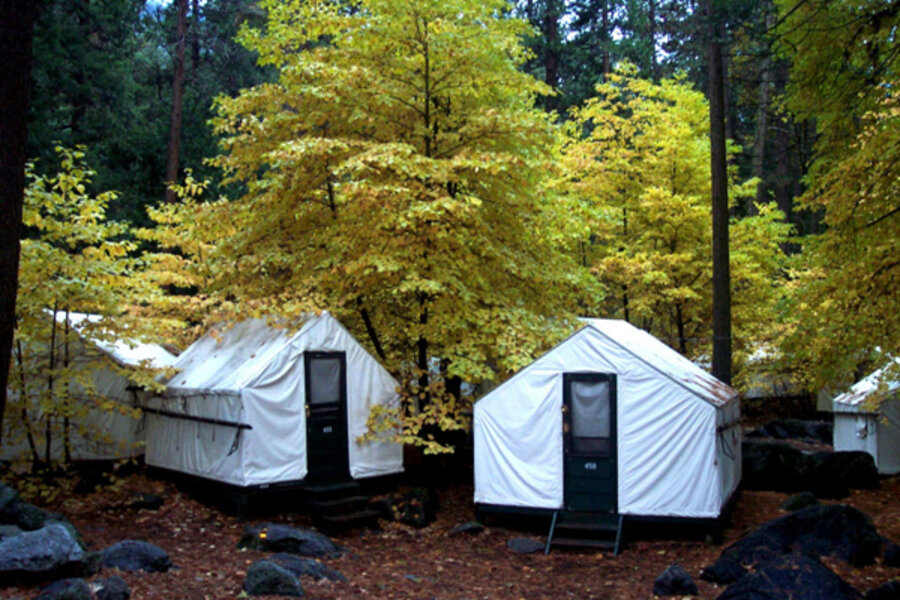Two more Yosemite campers struck with deadly rodent virus
Loading...
| San Francisco
Two more visitors to Yosemite National Park have been diagnosed with a deadly rodent-borne virus, raising the total number of people infected in the unusual outbreak to six, California public health officials said Thursday.
Two men died from the rare lung disease called hantavirus pulmonary syndrome, and four other people survived the rodent-borne illness. Most of the victims are believed to have contracted the virus while staying in tent-style cabins this summer in a popular camping area called Curry Village.
Park officials earlier this week shut down 91 insulated tent-cabins after finding deer mice, which carry the disease and can burrow through pencil-sized holes, nesting between the double walls of the structures.
Park authorities have notified 2,900 parties of visitors who rented the tent cabins from June through August that they may have been exposed to hantavirus.
Four who were infected at Yosemite this summer slept in the insulated tent cabins. One slept elsewhere in Curry Village, located in a valley beneath the iconic Half Dome rock formation, and the sixth case remains under investigation.
One man from northern California and another from Pennsylvania died. Three of the victims have recovered, and one remains hospitalized, the state Department of Public Health said in a press release.
Experts continued to investigate the outbreak, and the number of cases could rise as visitors who were exposed to the virus but have not yet shown symptoms fall ill, the agency said.
Nearly 4 million people visit Yosemite each year, attracted to the park's dramatic scenery and hiking trails. Roughly 70 percent of those visitors congregate in Yosemite Valley, where Curry Village is located.
Hantavirus is carried in rodent feces, urine and saliva that dries out and mixes with dust that can be inhaled by humans, especially in small, confined spaces with poor ventilation.
People also can be infected by eating contaminated food, touching contaminated surfaces or being bitten by infected rodents.
STARTS WITH FLU-LIKE SYMPTOMS
The virus starts out causing flu-like symptoms, including headache, fever, muscle ache, shortness of breath and cough. Initial symptoms may appear up to six weeks after exposure and can lead to severe breathing difficulties and death.
Although there is no cure for hantavirus, treatment after early detection through blood tests can save lives. The virus, which has never been known to be transmitted between humans, kills 38 percent of those it infects.
"The earlier it's caught and supportive care is given, the better the survival rate," said Dr. Vicki Kramer, chief of ve c t or-borne diseases at the state Public Health Department.
Dr. Charles Chiu, an infectious disease specialist at the University of California, San Francisco, said he made a habit of airing out his tent-cabin before occupying it as a precaution against possible virus-carrying dust particles when he stayed in Curry Village a few years ago.
But even Chiu said he was surprised to learn that a hantavirus had killed two people and stricken others who slept in the same structures this summer.
"It wasn't something even I had thought of at the time," Chiu, who studies hantavirus, told Reuters.
Hantavirus previously infected two Yosemite visitors, one in 2000 and another in 2010, but at higher elevations.
Melanie Norall of Palo Alto, California, is monitoring her 8-year-old daughter's every sniffle. They stayed in a cabin outside Yosemite's north entrance at the end of July and awoke to mice scurrying and eating nuts out of their luggage.
The vast majority of hantavirus victims are young and middle-age adults, Chiu said, probably because they are mostly likely to engage in activities that would readily expose them, such as chopping and carrying fire wood or sweeping the floors.
"The message should not be you should stop camping. The important thing is general awareness of this disease and to avoid wild rodents in general," Chiu said.
Since it was first recognized in 1993, hantavirus pulmonary syndrome has been diagnosed in 64 people in California. Nationwide, the virus sickened 587 people between 1993 and 2011, according to government data.
Editing by Steve Gorman







